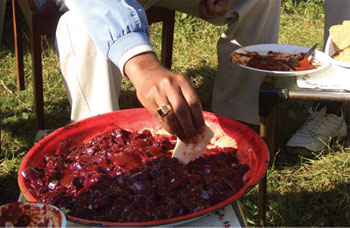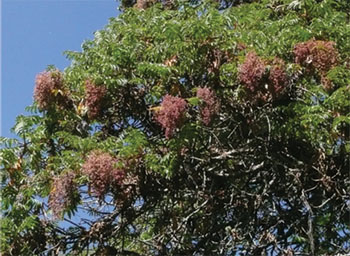Beef tapeworm
Taenia saginata infection or beef tapeworm has been known for many centuries. The disease is related to the cherished tradition of eating raw beef, a common practice in most parts of the country.


The major factors contributing to the continuing existence of beef tapeworm infection are lack of proper slaughtering practices and eating raw beef. Open defecation also spreads the disease. Open field defecation practices are widespread in rural areas and small urban centres. This means that if an infected person defecates on open fields, the infected faeces contaminate the environment, especially pastoral lands used for cattle grazing. The cattle then become infected. Once inside the animal, the larval stages of the tapeworm form cysts, also known as cysticerci, in the muscles and some other organs. The contaminated meat containing the cysts will infect people who eat it if it is not thoroughly cooked.

The lack of proper slaughtering facilities and the absence of meat inspection in some slaughterhouses (abattoirs) means that contaminated meat can be sold, and people eat the infected meat. This practice results in a high frequency of tapeworm occurrence.